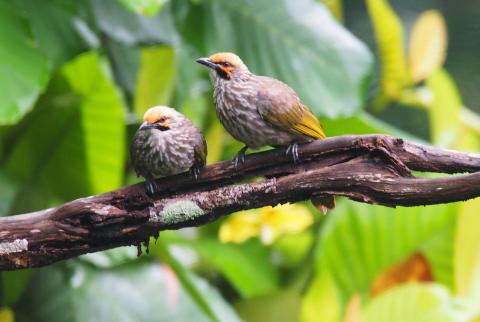Reaction: A study investigates the evolution of homosexual behaviour in animals
A study has published a phylogenetic analysis to explore the evolution of same-sex sexual behaviour in the animal world. The research, published in the journal Nature Communications, is led by the Experimental Station of Arid Zones (EEZA) of the Spanish National Research Council (CSIC).

Antonio Osuna - sexualidad animal EN
Antonio J. Osuna Mascaró
Postdoctoral researcher at the Messerli Research Institute at the University of Veterinary Medicine Vienna (Austria), animal cognition specialist
The article is one of those first-rate works, one of those that appear to be simple and one wonders how nobody had thought of it before. The merit lies in the idea and the exhaustive documentation work behind it. The idea that homosexual behaviour is the result of evolutionary convergence between mammals is extremely interesting, as is the fact that only in males is it related to lethal violence between adults.
In dealing with a subject about which we still know so little, it is only natural that many answers remain unanswered. The authors have been very careful to state the limitations of their study, and this is always welcome. There are, however, some issues that could perhaps have been addressed more clearly, as the way they are expressed both in the article and in the press release could be misleading. The authors state that the frequency of homosexual behaviour is similar in both males and females, but they are referring to whether this behaviour has been documented in a given species or not, not to the percentage of individuals expressing this behaviour within each species. Homosexual behaviour in a given sex could be much more common than in the other sex, and this could be very informative.
One of the conclusions of this work is that the evolution of homosexual behaviour in males appears to be dependent on the prior existence of lethal violence between them. This is extremely interesting, as it suggests that homosexual behaviour in males may have evolved as a way to mitigate intrasexual aggression (between members of the same sex), but only between males. The authors have not found this in females, which leads me to wonder about the existence of other forms of aggression, which are not lethal, but which may have an impact on the reproductive success of other females. I believe that studying only lethal violence leaves out the possibility that homosexual behaviour serves the same function in both sexes: to reduce intrasexual conflict, lethal or not.
It is also stated that homosexual behaviour is much more common in adult animals than in young animals (251 species versus only 10), but I understand that this refers only to the individual who takes the initiative, not the one who receives the action. It would have been interesting to explore how common it is for the other individual to be a juvenile. In primates, homosexual behaviour frequently occurs between adults and juveniles.
This last point leads me to ask how far the opportunity factor might explain the greater occurrence of homosexual behaviour in social species. Perhaps individuals of typically solitary species can be compared when in the wild, or in captive conditions where opportunities are likely to be greater.
I am sure this work will be of great value to the scientific community. The study of homosexual behaviour has been very limited for reasons we all know, both in humans and in other animal species, and these reasons are purely social. It is extremely interesting to discover that our common ancestors with other great apes most likely already displayed these behaviours, and that they are as natural as any other.
Gómez et al.
- Research article
- Peer reviewed
- Observational study
- Animals



